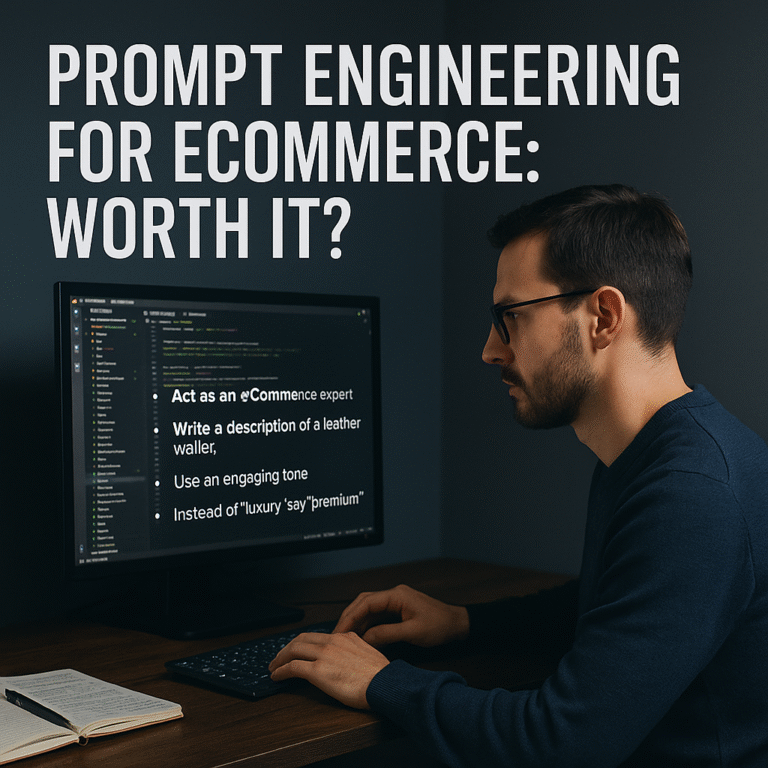“Prompt engineering” is the latest phrase everyone’s pretending they invented, like SEO in 2008. In the eCommerce world, it’s getting pitched as a magic wand: just whisper the right words to ChatGPT and your product pages, emails, and customer service scripts will basically write themselves. That’s the fantasy. The reality is a bit more grounded, a bit more tedious, and a hell of a lot more about knowing your business than mastering prompt syntax.
Let’s start with the obvious. Yes, LLMs like GPT-4 are useful. You can generate passable copy, brainstorm headlines, translate tone, and even pseudo-analyze customer reviews if you phrase things right. But that’s not engineering. That’s using a glorified autocomplete with context.
True prompt engineering is about knowing how to extract useful, repeatable and business-aligned output from the model – consistently. That means chaining prompts, controlling formatting, testing variations, and wrapping the output in logic that makes sense for your storefront. It’s not just “write a description for a leather duffle bag.” It’s “write it at a 9th-grade reading level, match this tone, avoid overclaiming, highlight the RFID pocket, don’t use the word ‘luxury’ more than once, and give me a bullet-point version too.”
Is that valuable? Absolutely. If you’re doing this at scale: Managing hundreds of SKUs, A/B testing across categories, or localizing for five markets, small prompt optimizations can compound fast. But if you’re a two-product brand writing a homepage headline, you don’t need a prompt engineer. You need to know your customer.
And here’s the part nobody likes to admit: most of the “prompt engineers” you see online are just copywriters who learned to write “act as a…” in front of their sentences. That’s fine. Nothing wrong with that. But let’s not pretend it’s some sacred technical role.
Prompt engineering matters most when it’s integrated into a broader system, where the output feeds directly into automation, personalization, or merchandising decisions. It’s a cog in a machine, not the machine itself. And certainly not the silver bullet marketers are selling it as.
So is it worth it for eCommerce? If you’re doing anything at scale, yes. If you’re building systems around AI output, yes. If you’re just trying to juice up your product pages without hiring a copywriter, then maybe, but don’t expect miracles. A good prompt won’t save a bad product. And the best LLM in the world still can’t fix a weak offer or a broken funnel.
Prompt engineering is a useful tool. Not a business strategy. Treat it accordingly.

